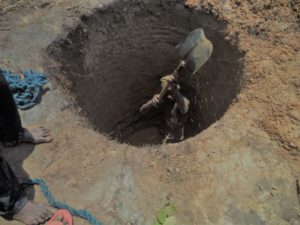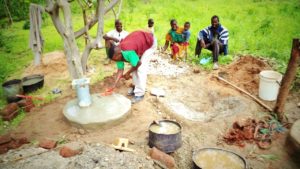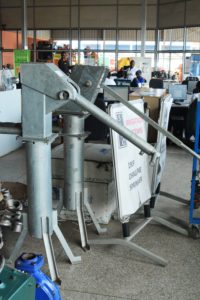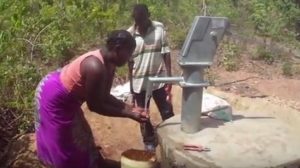From Beginning to the End: How Borehole Pumps are Installed
The person with great knowledge and tremendous experience in organizing projects who lives among the people in the village receives a report. A village would like to install a borehole pump so that they can have access to fresh clean drinking water. The borehole pump organizer arrives at the villager where all the people, the Headman, men, women, and children have gathered. The organizer addresses them.
 A borehole water pump is available. But the whole village has to participate and contribute. If they are unwilling to do this then the borehole pump will be denied. The site on which to dig the borehole has to be carefully selected. It has to be in the stream dambo and near an ant-hill if possible. Four experienced men will dig the borehole using hoes, picks, and buckets to haul the dirt and the water. The diggers will have to be paid. All the men have to contribute labor in form of molding small red bricks and bringing them to the borehole site.
A borehole water pump is available. But the whole village has to participate and contribute. If they are unwilling to do this then the borehole pump will be denied. The site on which to dig the borehole has to be carefully selected. It has to be in the stream dambo and near an ant-hill if possible. Four experienced men will dig the borehole using hoes, picks, and buckets to haul the dirt and the water. The diggers will have to be paid. All the men have to contribute labor in form of molding small red bricks and bringing them to the borehole site.
Money is sent from the United States to purchase 10 bags of cement and to pay for the labor for the 4 experienced borehole diggers.
Once the borehole digging is completed to the depth of anywhere from 10 to 20 feet deep, the men of the village have to build the borehole cement rings using the bricks and cement starting from the bottom of the borehole to the top.
The men have to build the heavy cement round top cover of the borehole. They also have to build a smooth cement clearing around the base of the cement borehole pump to guide spilling water away from the pump.
 All the women and children will contribute by cooking food for the men, drawing and carrying of water and carrying and bringing to the borehole river-sand that has to be mixed with the cement.
All the women and children will contribute by cooking food for the men, drawing and carrying of water and carrying and bringing to the borehole river-sand that has to be mixed with the cement.
Once the digging of the borehole, building of brick and cement borehole rings and the very heavy cement cover are completed, the pump is ready to be installed.
The village organizer travels by public bus to Lusaka the Capital City of Zambia about 500 miles away. He purchases the industrial size durable pump and all the parts and puts them on the bus. He travels with the pump back to Lundazi and transports the pump by minibus to the borehole site. The borehole pump project from the United States pays for the purchasing of the pump, transportation costs for the pump on the bus and bus transport for the organizer. Once back in the Lundazi small town, the organizer transports the pump to the borehole site using the local minibus transportation.

All the men from the village are summoned to assemble at the borehole pump during the day of the pump installation. They provide labor and help to the expert borehole pump installer who is paid for this skill. The completion of the installation of the pump is a great moment of jubilation and celebration as the pump is cranked and the fresh clean water flows from the pump. The estimated 300 people of the village have access to clean water. Surrounding villages who may be 3 up to 4 miles away may also come to the pump to draw water. The village borehole pump organizer is paid a small or modest commission as a token of thanks and appreciation. The total cost of the pump, cement, and the skilled labor in digging and building the entire borehole and installing the pump today is $1,400.
 This is how from 2014 to July 2018, 52 drinking water borehole pumps were installed in at least 52 villages serving an estimated 15,600 men, women, and children. A total of $62,400.00 was spent, sponsored by one elderly Mennonite Philanthropist husband and wife and family in the United States. The couple ran out of money. The project now hopes to raise funds from the public to continue with the project of installing borehole pumps to provide fresh clean drinking water to the villages.
This is how from 2014 to July 2018, 52 drinking water borehole pumps were installed in at least 52 villages serving an estimated 15,600 men, women, and children. A total of $62,400.00 was spent, sponsored by one elderly Mennonite Philanthropist husband and wife and family in the United States. The couple ran out of money. The project now hopes to raise funds from the public to continue with the project of installing borehole pumps to provide fresh clean drinking water to the villages.

